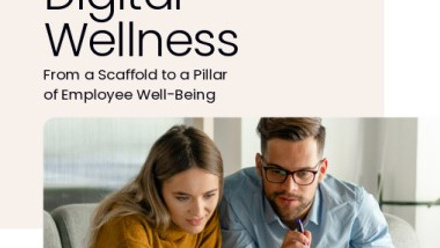Julie Cridland of Aster Group on adapting the employee experience to match new ways of working

Adapting to new ways of working
Housing association, Aster Group is one organisation that is now taking a ‘virtual first’ approach to ensure that its employees have as much flexibility and choice as possible when choosing how to work. Aster is committed to providing a customer-focused approach and has realigned its organisational culture so that it is geared, first and foremost, towards proactively delivering the best possible customer experience.
Aster’s employees are encouraged to mobilise technology to connect with each other in the first instance. They also have access to a suite of collaborative spaces available for those times when ‘virtual first’ isn’t the best way of getting something done. The virtual first approach has been shaped by employee feedback, and is driven though the company’s ‘Right Spaces, Right Places‘ project, which is part of the company’s transformation programme, and is really shifting the way colleagues think about where and how they work in the future.
Supporting colleagues
Julie Cridland, employee experience lead at Aster Group, explains that they want their people to feel well and connected in the disparate 1,450 personnel strong organisation, particularly as employees adjust to new ways of working and begin to return to the office environment.
“We know some colleagues will be desperate to get back to collaborative workspaces and meet up with team-mates, but equally there will be others who are feeling anxious about reconnecting with people in and outside of work,” says Cridland. “To help our colleagues get the most out of our new ways of working, we have designed a new wellbeing campaign called Reconnect & Rebalance.”
Going forward, the organisation will be taking an ‘agile’ working approach, whereby employees’ working location is selected based on where they can get the best outcomes for their role and needs on any given day. The aim of Reconnect & Rebalance is to give people the tools and resources they need to tackle any anxiety and concerns they may be feeling when they visit one of the new working hubs.
The campaign provides digital wellbeing content ‘on demand’ when employees need it, including videos, infographics, podcasts and 24 new digital wellbeing books from Liggy Webb, an award-winning and bestselling author and international consultant specialising in life skills.
“We’ve also been working with employees to help them rebalance their week so that they can find quiet time to get things done, but also have more collaborative, innovative conversations at other times,” says Cridland.
This has been achieved through workshops to find out what kind of support employees need to help them reconnect with colleagues and rebalance the way they work. This feedback has then been used to shape the programme going forward.
A virtual-first approach
As the business moves to become more agile and less centred around traditional large offices across its southern region, Aster Group’s virtual-first approach provides its employees with the flexibility and choice to work wherever gives them the most productive day, which ultimately helps their wellbeing.
Employees are now able to hire meeting rooms or workspaces that are more conveniently located as and when required. This could be near a site where they are working, rather than a central office. As well as reserving workspaces outside of the company’s network of buildings, employees will be able to book the space they require on an app from a list of pre-approved locations, which must have met specific criteria and offer certain facilities as required by the organisation.
This is all part of improving the employee experience, enabling improved health and wellbeing by reducing unnecessary travel and allowing for in-person collaboration, while also increasing productivity.
Cridland says: “Since Covid we’ve learned that our wellbeing offer needs to be more agile and have the ability to flex as the business’ needs evolve. We want people to feel well and stay connected.”
And so virtual offerings are essential to delivering more responsive communications, employee benefits, and wellbeing strategies that will deliver the best experience for employees, and ultimately, for customers too.






